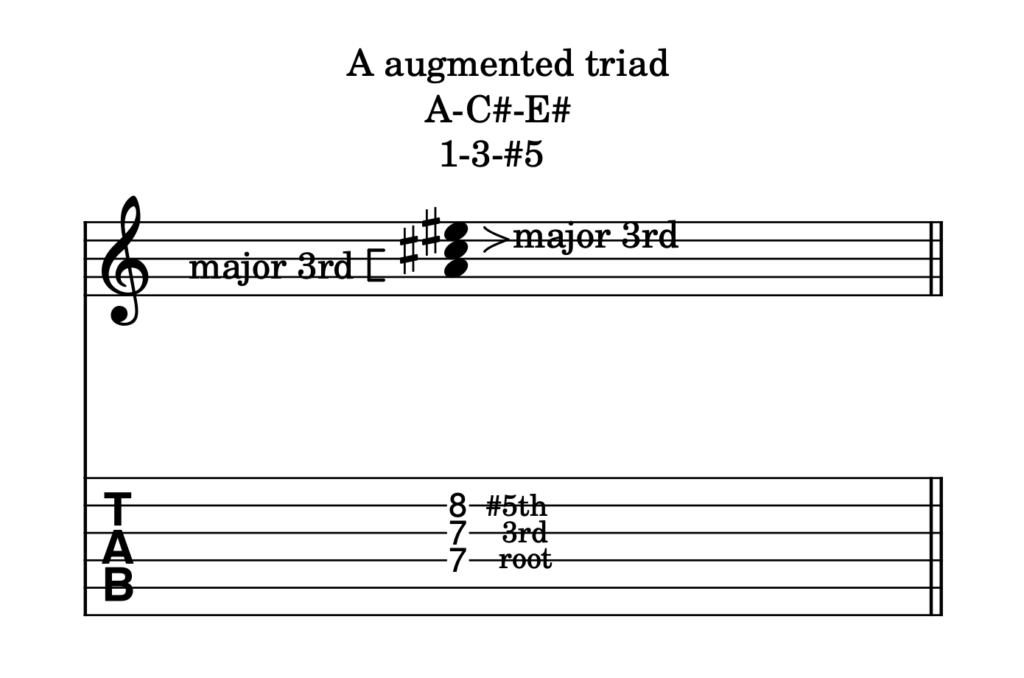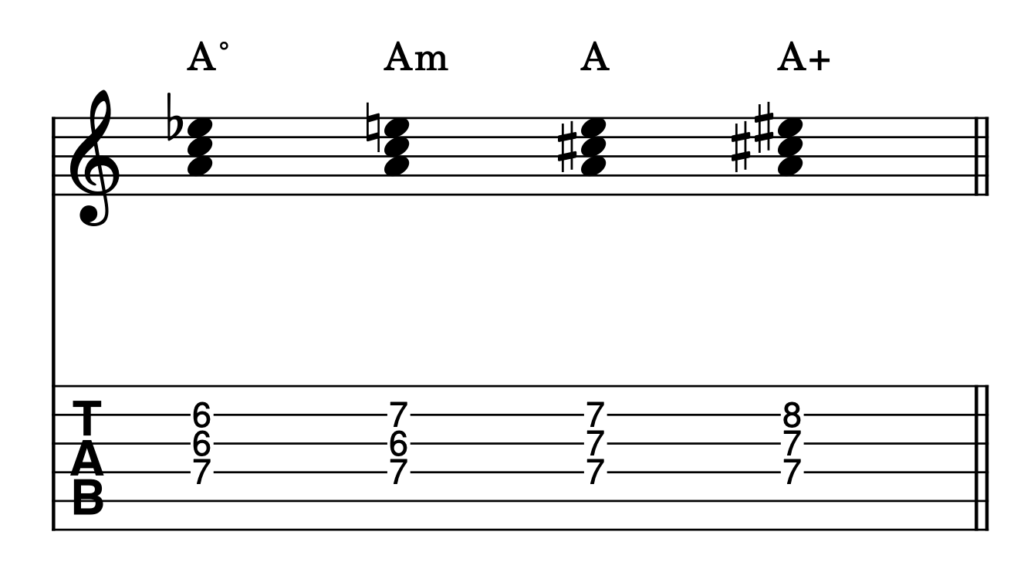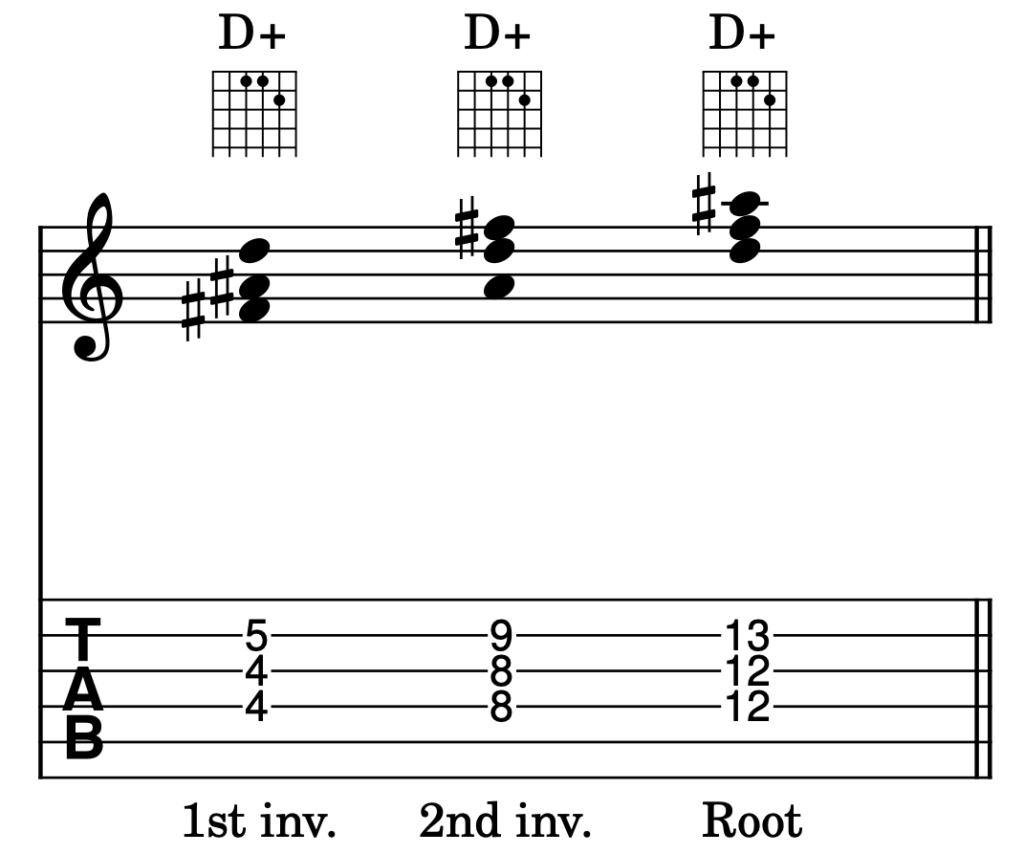Amazing Augmented Chords
For a long time I never found much use for augmented chords because in isolation they feel uneasy to the ear. But any chord that produces a strong reaction can be used effectively in the right context. Let’s discuss what an augmented chord is, how to form it, and how to use it.
How To Form An Augmented Triad
An augmented triad is one note different from a major triad with the same name. To turn a major triad into an augmented triad, raise the 5th of the major triad by a half step.
(Read our “How To Form Triads” article for essential information on major and minor triads.)

You Can Hear The Difference
To the right we can clearly see the the difference in how the four main types of triads are formed. To indicate an augmented chord, we use the plus symbol (+).
Make sure to play these four chords for yourself to hear the difference in sound between each triad.

Uses Of The Augmented Triad
One of the best ways to use an augmented triad is as a passing chord from one diatonic chord to the next. The augmented chord will include a note that chromatically connects one chord to the next. Notes that lead from one chord to another are called leading tones. Leading tones are an effective way to transition from one chord to another in a progression.

All of the augmented chords in the diagram above serve as passing chords with leading tones from one diatonic chord to the next. Sprinkling in an augmented chord between two other chords is a simple and effective way to spice up a chord progression.
Below is a list of places in a major key where you can very effectively use an augmented triad as a passing chord. Note that all augmented chords contain at least one chromatic note that is not found in the parent key.


Can you hear all of those interesting transitions between chords? You can use those same chord formulas all around the neck in different positions and voicings.
Which brings me to my final point of this lesson…
The Augmented Triad Shape Is Moveable
Like all triads, the augmented chord can be in root position, 1st inversion, or 2nd inversion. But unlike major and minor triads, whose shapes change depending on the inversion, an augmented triad maintains the same shape when you invert it.
As you can see, as we move through the inversions of an augmented triad, the shape of the chord on the fretboard stays exactly the same. We can play the augmented triad, maintain the same shape while moving everything up four frets, and then play the same augmented chord again, just in a different inversion.
Pretty amazing! I’ll write more about augmented chords and their many practical uses in a future article.
If you’re interested in learning more music theory in Open D, check out the book Mastering the Fretboard in Open D and the 3+ hour video course Mastering Open D Tuning.

RELATED LESSONS YOU’LL ENJOY:
Join our mailing list to receive the latest tips!